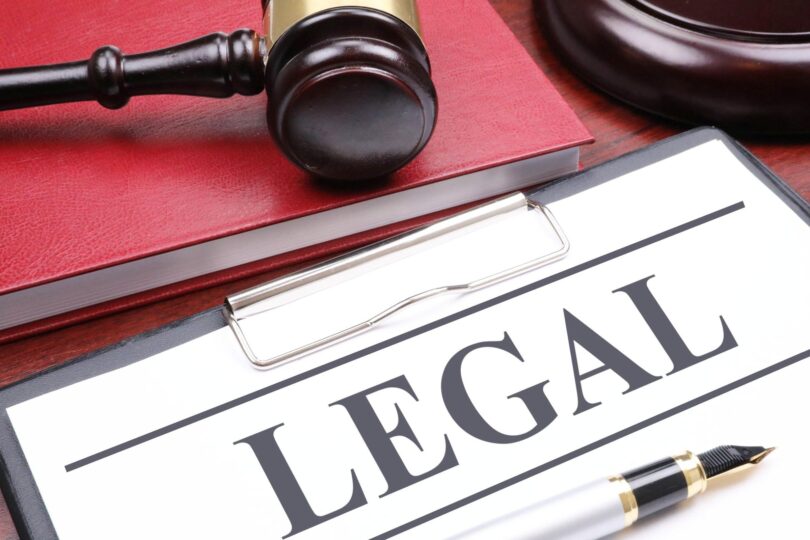As digital content floods the internet, content creation is becoming a larger part of everyday life. Whether you’re a small business owner, a YouTube star, or an up-and-coming influencer, navigating the complex legalities of digital content creation can quickly become overwhelming. In today’s article, we explore the importance of understanding the legal requirements of your digital content, and offer guidance to those interested in staying informed and compliant.
1. What is Digital Content Creation?
Understanding Digital Content
Digital content is any form of a media that is conveyed via digital channels, such as websites, blogs, apps, social networks, and more. Content can be anything from news and text to audio, video, images, games, and interactive tools.
Legal Considerations
Creating and distributing digital content has unique legal implications. In order to protect yourself from potential legal issues, it’s important to be aware of a few key points:
- Copyright – copyright law protects the creators of original works including written word, visual content, music, software, etc. Copyright law grants authors the exclusive right to reproduce and distribute their works.
- Intellectual Property - intellectual property law protects ideas and innovations, as well as physical objects like trademarks and logos. Authors who create innovative works will need to register their works for legal protection.
- Privacy - in certain cases, personal information will be collected from visitors when visiting a website or using an online service. In order to protect the privacy of customers, organizations should ensure that any collected information is used in a responsible manner.
- Defamation – defamation is a form of false communication that damages the reputations of others. Content creators should ensure that they do not spread false information or make false claims about others.
- Licensing – many digital works can be licensed for use. Authors can make money from their work by licensing it to other parties. Authors should ensure that they understand the details of any licensing agreement they enter into.
In conclusion, content creators need to be aware of the legal complexities associated with digital content creation. Keeping these legal considerations in mind can help ensure that authors remain protected and abide by the law.
2. An Overview of Legal Complexities Surrounding Digital Content Creation
Digital content creation involves a lot more than just making content. The complex legal tangle surrounding digital content can be daunting for creators starting out. It includes copyright, trademark, and other intellectual property laws, alongside complex issues of digital rights, privacy, ethics, and censorship, contracts, and other regulations. In this section, we’ll explore some of the legal complexities associated with digital content creation.
Copyright – The fundamental basis of copyright law is that any person who creates an original work is automatically granted a copyright on it. This includes works of authorship, such as writing, music, design, and photographs, along with many digital works. Copyright can be infringed upon if someone uses your work without your permission. Copyright is extremely important for digital content creators to understand.
Trademark – A trademark allows you to protect the name, logo, or slogan associated with your business, product, or services. It’s important to be aware of trademarks when creating digital content. If you use someone else’s trademark in your content, you could be sued for infringement.
Digital Rights, Privacy, Ethics, and Censorship – Digital content creators are subject to a variety of laws and regulations that govern content. These laws differ from country to country, adding to the complexity. Digital rights laws regulate the ways in which digital content can and cannot be used, while privacy laws protect personal data from misuse. Ethical and censorship laws also place restrictions on certain types of content, such as pornography, hate speech, and more.
Contracts – Many digital content creators enter into contracts with publishers, sponsors, or other parties. It’s important to read and understand the terms and conditions of any contract before signing it. This includes understanding any royalties, rights agreements, or non-disclosure agreements that may be involved.
Navigating the legal complexities of digital content creation can be overwhelming. It’s important for digital content creators to have a basic understanding of the laws and regulations that affect their work. By taking the time to educate yourself, you can protect yourself and your work and ensure that your content is legally compliant.
3. Fundamental Principles of Digital Content Creation Rights
Much of the current landscape in digital content creation rights presumes that creators own their original works, but under certain circumstances, different parties can own different aspects of the same content. To understand the legalities of digital content creation, it’s important to be aware of three fundamental principles.
- 1. Copyright Protection. Copyright protection is a legal right granted to creators to prevent the unauthorized use of their creations. Copyright applies to original works of authorship, such as art, movies, books, photographs, and other creative works. Copyright protection enables creators to protect their works from exploitation by others.
- 2. Licensing. Licensing is an agreement between a rights holder and a licensee in which the rights holder grants the licensee permission to use the rights granted to the rights holder. Licensing can also refer to the royalties that the licensee pays to the rights holder for the use of their content. Licensing is a major part of the digital content creation landscape and can be complex without the help of an experienced lawyer.
- 3. Fair-Use Principle. The fair-use principle states that creators can use portions of other people’s copyrighted works under certain conditions. This includes the use of quotations, parodies, or educational materials, so long as the use is for a “transformative” purpose and does not interfere with the creator’s ability to benefit from their work. Fair use is a complicated legal concept and should be evaluated on a case-by-case basis.
Understanding and navigating legal complexities is an important part of digital content creation. Staying aware of these fundamental principles can help ensure that creators and rights holders are both protected and able to benefit from their work.
4. Exploring the Different Types of Digital Content
- Text: When creating digital content, understanding copyright law and other legal complexities is critical for producing content that is both legal and creative. As technology evolves so too does the world of content creation, as it continues to become easier to produce, publish, and distribute materials online. Navigating the complex legal environment around digital content can be a daunting task and requires comprehensive knowledge of the various legal statutes involved.
- Images and Graphics: Images and graphics used in digital content must also be legally permissible. Copyright laws pertaining to artwork and photographs should be carefully researched prior to use. Creative commons licenses and stock image websites can also be helpful in preparing legally acceptable artwork.
- Audio:Similar to images and graphics, audio files, such as music or other sound effects, utilized when creating digital content must also adhere to copyright laws. Music and sound effects from commercial sources should always be properly licensed before use.
- Video:With the rise of digital media, videos and other moving content has become increasingly popular in digital content creation. Content seen within videos must also adhere to copyright laws, so it is important to consult with a lawyer prior to producing any video content. Additionally producers should ensure that all footage used does not contain any infringing materials.
To ensure that digital content is legally permissible, it is advised to seek professional legal consultation when creating online materials. Additionally there are also many legal resources available online which can be used to help navigate the legal complexities surrounding digital content creation. Programming laws and regulations may also need to be considered to ensure content is legally acceptable. Finally, it is important to remember that content creators must always take responsibility for their creations and make sure that all content is created in a legally compliant manner.
5. Exclusivity vs. Multi-Platform Licensing for Digital Content
When creating your digital content, one major legal complexity to consider is the issue of exclusivity vs. multi-platform licensing. Exclusivity grants you the right to distribute and sell your content exclusively on one platform, whereas multi-platform licensing grants you non-exclusive rights to distribute and sell the content across multiple platforms.
Exclusivity provides an easier means of understanding your content’s ownership and usage rights across all platforms. It’s also a great way to ensure that your content is not used or reappropriated without your permission. However, it’s important to note that exclusivity limits the platforms in which your content can appear, potentially reducing the number of your potential customers and profits generated.
Multi-platform licensing, on the other hand, grants you non-exclusive rights to distribute and sell your content across multiple platforms. This gives your content more visibility and potentially more customers and revenue, but it also means your content can be reappropriated easier without your knowledge or permission. You’ll also need to be sure to keep track of and manage the rights granted by the different platforms, as they may have some attesting limitations.
It’s important to carefully consider the implications of both exclusivity and multi-platform licensing for digital content. Both options come with their own unique advantages and drawbacks, and it pays to make a well-informed decision based on the nature of your content and the platforms it’ll be sold on.
- Exclusivity: grants you the right to distribute and sell your content exclusively on one platform.
- Multi-Platform Licensing: grants you non-exclusive rights to distribute and sell the content across multiple platforms.
- Advantages: each option comes with its own set of advantages, such as increased visibility and potential customer base for multi-platform licensing, or better ownership and usage rights for exclusivity.
- Drawbacks: each option also comes with specific drawbacks, such as potential limit on the pool of potential customers for exclusivity, or potential for unauthorized reappropriation of content with multi-platform licensing.
Ultimately, it’s up to you to determine what option is best for your digital content. Be sure to do sufficient research and to carefully weigh the pros and cons of each option before making a final decision.
6. Understanding Creative Commons and Permission-Based Licensing
Knowledge is Power
can give you an advantage when it comes to digital content creation. This form of licensing can provide protection to creative works, giving creators greater control over how they use and distribute their material.
What is Creative Commons Licensing?
Creative Commons Licensing (CCL) is a set of industry-wide licenses that give creators and publishers the right to share and use their work in specific ways. By agreeing to Creative Commons terms, you are granting permission to others to use your content in a number of ways. It also allows you to hold people legally accountable for misusing your content.
What are the Different Types of Creative Commons Licenses?
Creative Commons licenses come in several forms, depending on what level of protection you want to have. Each license in the Creative Commons suite grants different levels of rights. The different types of licenses are:
- CC BY: Attribution – You give the creator credit for their work.
- CC NC: Non-commercial – You cannot use the work for commercial purposes.
- CC ND: No Derivatives – You cannot modify or remix the work.
- CC SA: Share Alike – You must license any derivative work with the same license.
What is Permission-Based Licensing?
Permission-based licensing is a type of license that allows creators to set their own terms of use for their material. This type of licensing can be advantageous for content creators who want to have more control over how their works are used. With permission-based licensing, creators can decide what type of reuse is allowed and set additional conditions, such as pricing, attribution or other conditions.
Understanding the differences and similarities between Creative Commons and Permission-Based Licensing
Creative Commons Licensing and Permission-Based Licensing can both provide legal protection for content creators, however, they have some important differences. Creative Commons Licensing is an industry-wide standard, which offers creators a range of different terms. On the other hand, permission-based licenses are set by the creator and can offer more options for how the work is used.
At the end of the day, understanding the complexities of Creative Commons and Permission-Based Licensing can help you find the best way to protect your work legally. This will give you the peace of mind that your content is secure, while also allowing you to share and benefit from it.
7. Protecting Private and Confidential Digital Content
In the digital age, the protection of private and confidential digital content is a crucial part of the content creation and publishing process. The potential legal complexities are vast and need to be navigated carefully to ensure the secure communication and storage of confidential information.
Addressing Privacy & Security Concerns
- Ensure all digital content, and related communication, is securely stored and handled.
- Implement policies around how data and information is used and shared.
- Be transparent with customers and clients about data collection, use and security measures.
- Protect your content from hackers and from unauthorized access.
Understanding Copyright Laws
- Understand the different types of copyrights and their associated laws.
- Determine who owns the copyright to the content you are sharing.
- Be sure to get permission before using any content belonging to someone else.
- Accurately document and credit any content used from outside sources.
Maintaining Records & Responsibilities
- Retain any license agreements or contracts related to the digital content.
- Maintain records of ownership and transfer of copyright, if applicable.
- Be aware of legal issues such as libel, defamation, slander and privacy infringement.
- Understand your legal obligations and responsibilities to protect confidential content.
Creating and publishing digital content is a complex endeavor. Educating yourself on the laws and best practices for is crucial for content creators.
8. Identifying Commercial Opportunities in Digital Content Creation
Digital content creators have a number of legal complexities to navigate in order to identify and capitalize on commercial opportunities. Making sure one has all the necessary permissions and licenses for every part of the production process is critical in order to be able to monetize digital content.
Laws & Regulations
- Understand and adhere to local copyright and intellectual property rights.
- Know the rules and regulations for sharing or selling content online.
- Familiarize oneself with trademark and patent laws.
When creating digital content, the first step is to ensure that one has all of the required permissions and licenses. Different countries, states, and cities have different laws and restrictions on the use of copyrighted materials, so it is important to make sure that one is in compliance with the law. For instance, in some places, audio works require specific licenses in order to be able to be sold or shared.
The second key area is understanding the rules and regulations that govern sharing or selling content online. Selling digital content online, such as videos, images, or ebooks, require one to have a business license. It is also important to understand the requirements for the type of content being created, as different kinds of media have different requirements for pricing and distribution.
Finally, it is important to familiarize oneself with trademark and patent laws to ensure that one does not inadvertently infringe upon another company’s or individual’s intellectual property. Doing due diligence in this area is essential to avoid costly legal battles and fines down the road.
Digital content creators should take the time to research and understand the legal requirements surrounding the creation and sale of digital content. When these steps have been undertaken, identifying and capitalizing on commercial opportunities in digital content creation can open up a whole world of possibilities.
9. Final Thoughts: Practical Ways to Navigate Digital Content Creation Legal Complexities
Creating digital content can be a complex and daunting task, especially when navigating legal complexities. Understanding the facets and implications of the laws governing digital creation is a critical component of content strategies.
- Know your medium: The medium through which digital content is released affects the type of regulation that applies. Understand the important differences between a website, blog, and social media application.
- Know your local regulation: Digital content exists in a global context, but laws governing it are established by individual countries, states and cities. Make sure you’re aware of all local and international laws concerning the content you’re producing.
- Know your responsibility: You are responsible for the accuracy and legal compliance of any third-party content used in connection with your own. Make sure you clarify contracts, if necessary, before using such content in any of your productions.
- Know your audience: Content creators have both legal and ethical responsibilities concerning minors. Ensure you understand the rules governing the material you’re creating, graphics, illustrations, etc., for it to be compliant and appropriate.
- Know your branding: Copyrights, trademarks, service marks, logos, and other intellectual property all come into play during digital content creation. Make sure not to infringe others’ rights when creating content for your own projects.
- Know your contracts: Digital content contracts specify the terms and conditions under which a creator agrees to release content. It’s important to understand the legal implications of these before signing on as a content creator.
With this comprehensive knowledge in hand, content creators can feel confident in the legal soundness of their efforts, and even use it as a competitive advantage when putting together content strategies. It’s essential to understand not only the implications of the law and the contracts involved in digital content creation, but also the potential for legal opportunities.
As technology continues to advance, the legal landscape of digital content creation will remain dynamic. Understanding the legal complexities can help content creators minimize their legal risks and maximize their potential rewards. With the right tools, knowledge, and resources, the ever-changing digital content world can be navigated with confidence.








